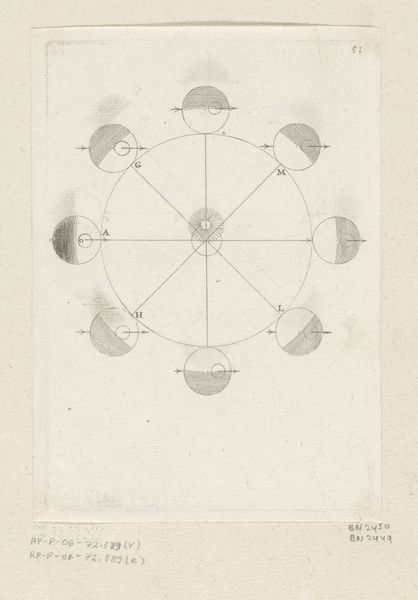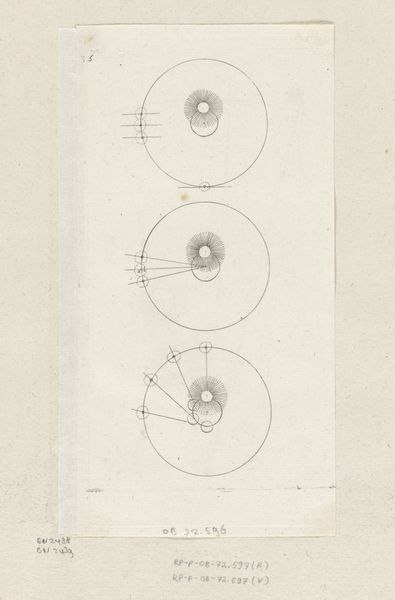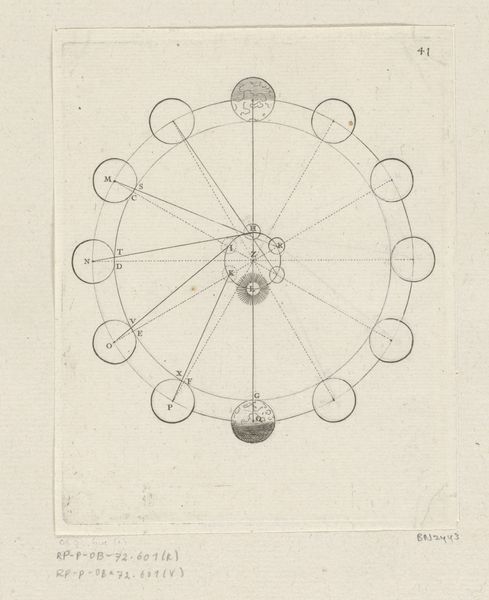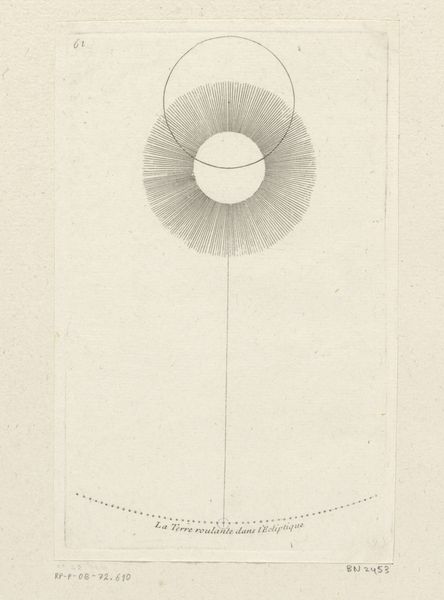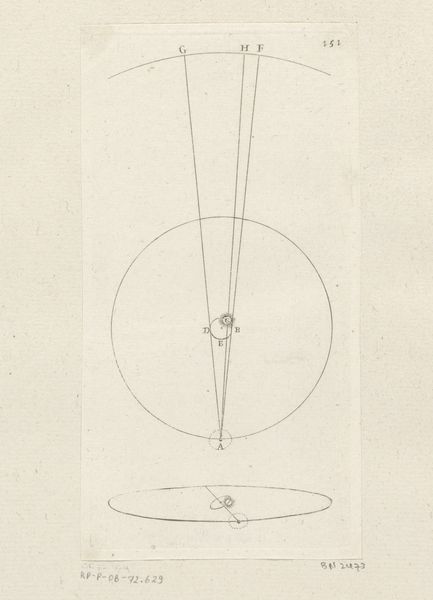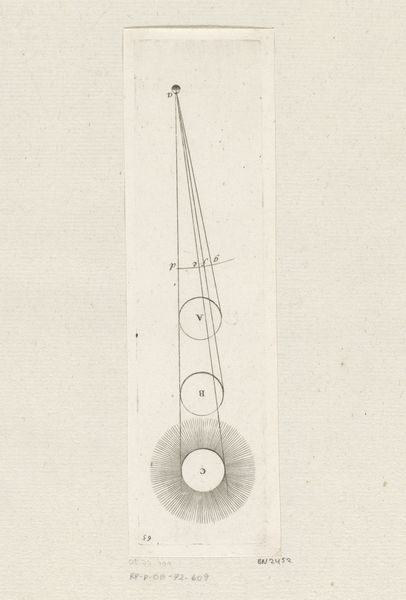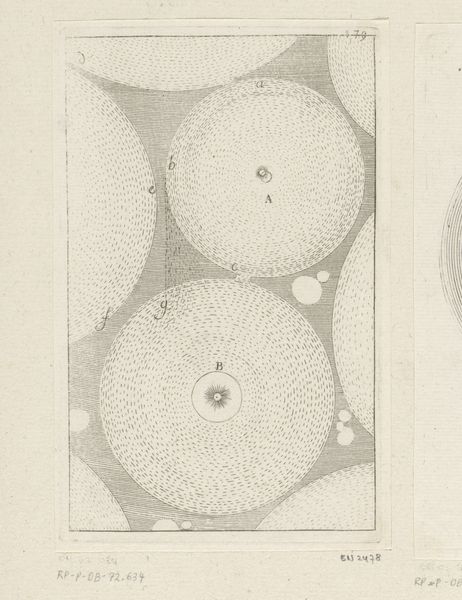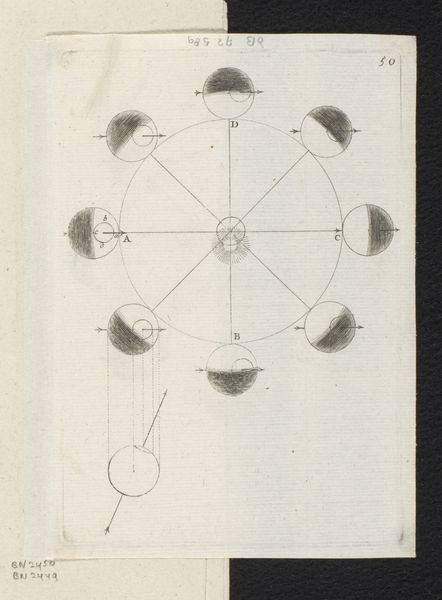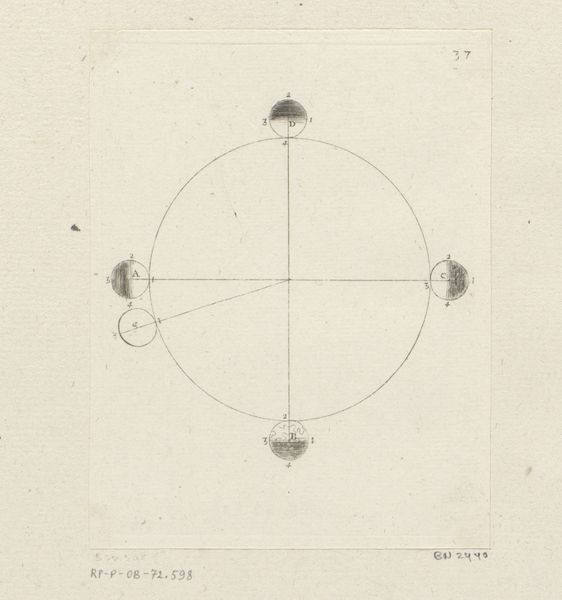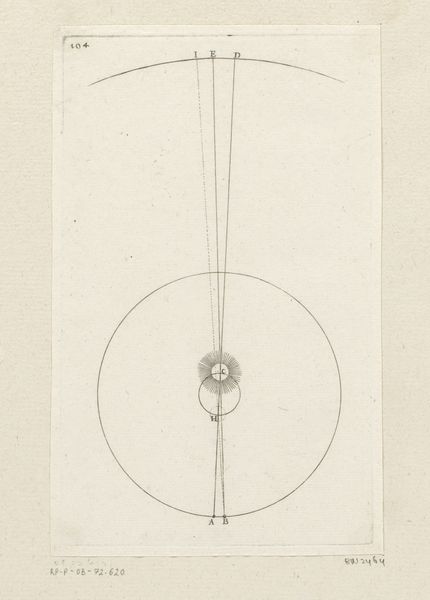
Ongelijkheid tussen dagen en nachten met onderaan vier posities van de Aarde 1706
0:00
0:00
print, engraving
#
baroque
# print
#
geometric
#
line
#
engraving
Dimensions: height 162 mm, width 111 mm
Copyright: Rijks Museum: Open Domain
Editor: This is “Ongelijkheid tussen dagen en nachten met onderaan vier posities van de Aarde” - “Inequality between days and nights with four positions of the Earth below”, made in 1706 by Sébastien Leclerc I. It’s an engraving. I'm struck by its very diagrammatic quality, the way it seems to want to explain something rather than just be looked at. What can you tell us about it? Curator: You're right, it's a diagrammatic engraving and such prints served a very specific public role in the 18th century. It was an era deeply invested in the Enlightenment and scientific discovery. Prints like this weren't just art; they were tools for disseminating knowledge. Leclerc was a draughtsman and engineer. Editor: So it's trying to be educational? Curator: Precisely. Consider who might have consumed this image. Not necessarily scientists, but perhaps educated gentry, merchants, or even aspiring navigators. Images like this helped popularize science and fostered a sense of civic participation in broader intellectual pursuits. Now, if you look closely, you will see these positions identified A,B,C and D. Can you spot some differences between A and C positions? Editor: It seems that at position A and C the illuminated position is swapped. A on the left, C on the right, they are flipped. Curator: Right, the depiction is deliberately schematic, it provides the public with accessible way of viewing their world, and understanding how global locations related to the planet position relative to the sun. Where else at the Rijksmuseum might an observer discover art with societal educational goals? Editor: That's fascinating; it makes me think about other maps and charts in the collection as a type of… early infographic! I never considered scientific illustration as an active player in how knowledge was shared and perceived! Curator: Exactly! By seeing the print through the lens of cultural and social history, we gain new appreciation for these works.
Comments
No comments
Be the first to comment and join the conversation on the ultimate creative platform.
